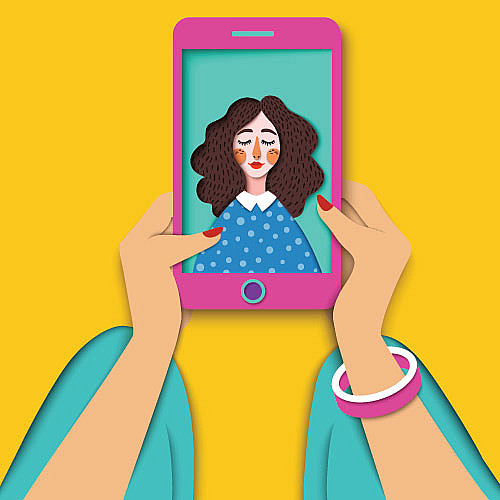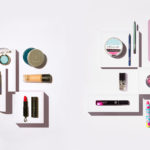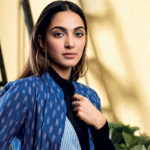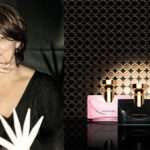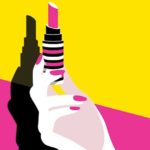How Online Opinion Shapers Became The New Faces Of Big Beauty Brands
The average Facebook user spends 35 minutes a day browsing, while the gold standard for Instagram is 15 minutes a day according to new studies. If you fit into this statistic, there is no way that you’ve missed Masaba Gupta’s new beauty line for Lakmé. Named Candy Land, this Lip Pouts collection is designed to induce nostalgia. Its 10 matt shades include the red from Phantom sweet cigarettes and nudes from Melody toffee; colours every urban working girl and Lakmé’s most likely customer born in the 1980s would relate to. The campaign, in a first for the brand, also features the dusky designer as the face for the line — a far cry from the peaches and cream complexioned Czech import Yana Gupta we saw two decades ago.
What has changed?
Say hello to ‘the influencer’. The heavyweight marketing term also brings with it companion terms like ‘relatable’ and ‘engagement’. Gupta, at the time of writing this story, had 4,33,000 fans following her every move religiously on Instagram. Incidentally, in 2015 she was also the first designer to do an Instagram stream for Lakmé Fashion Week. The launch, a pure digital push, is search engine-optimised to throw up blogger reviews of the collection along with a listicle on a content site that had Gupta’s tips on how-to style this collection of lipsticks. In layman terms, here is a collection that you the smartphone user will aspire to own, relate to once you are shown how it would work for you by a mutiny of bloggers and then click ‘add to cart’.
“Influencer marketing forms an important part of the brand introduction and development strategy,” says Archana Jain, managing director of PR Pundit, an agency that represents luxury fashion and beauty brands such as Bobbi Brown, Estée Lauder and Christian Louboutin in India. “Not so long ago, perhaps even 10 years ago, India had limited beauty brands and even lesser discussion on beauty in the editorial space. Celebrity endorsements have been the original form of influencer marketing, but digitally active regular people with interest in beauty have become powerful influencers today,” she explains.
Globally too, why are we seeing so many new internet celebrity-inspired beauty brands launching? Think of now-cult brands like Glossier, started by Into The Gloss blogger Emily Weiss, Huda Beauty, Kat Von D and Kylie Cosmetics by Kylie Jenner. The answer starts with YouTube, where tons of make-up videos are uploaded every day. Huda Beauty’s quick tutorial with the Rose Gold Palette has racked up over 4,00,000 views and the bestseller palette has a constant sold-out status with blogs dedicated to how to get your hands on one! With such a huge market, how can internet’s biggest queen stay behind? Kim Kardarshian’s KKW brand selling out in less than three hours this June had her twitter feed looking like this:
21 June 2017 9.42 PM
OMG Medium has sold out! I can’t believe it! In just a few minutes!
21 June 2017 9.54 PM
Wow now the Light has sold out!!!
22 June 2017 12.08 AM
All of the Contour & Highlight Kits have sold out!!!
Make-up is an acquired skill. I, for example, depend majorly on an iPad perched precariously amid my mountain of make-up following a step-by-step tutorial on how to lift droopy eyes. Among the tricks I have learnt, my favourite is applying a masking tape from the edge of my nostril to the end of my eyebrow, and then using it as a guide to create cat eyes. To understand this obsession with how-to videos, I turn to my friend, Dhanashree Gupte, a self-confessed beauty tutorial addict who turns up at every drinks plan with her eyeshadow game on fleek. “I will prime, colour-correct, contour, bake, highlight and everything in between for 8-p.m. cocktails at a casual bar,” she shares. Gupte swears by vloggers like Huda Beauty and NikkieTutorials for mega beauty trends like applying sparkling lip gloss, and Corallista and MrJovita George for everyday tricks because, she says, “They are closest to my skin colour and locality, so I don’t have to take tips from someone who lives in the desert or Europe.”
Earlier we depended on the make-up didi in our local parlour for tips; now things are changing faster than our data plans. Social media has given us far more efficient pro tools. There is no denying that the millennials are learning their hair and make-up tricks from the ‘experts’ on YouTube, Snapchat and Instagram. But with so much of the marketers’ spends geared towards promoting their brands on digital, how does one trust these recommendations?
The keyword, according to Business of Fashion’s guide to building a beauty brand, is authenticity. ‘It is (instead) an intangible thing that makes something resonate, inspires trust…creates a connection.’ In order to better comprehend this new information, I also decide to do a quick Facebook poll (what else in 2017) and ask my friend list to share their experiences. An overwhelming number of women picked blogger at Vbeauty.co, Vasudha Rai. The reason: they trust the authenticity of her reviews. “I don’t do paid reviews. All my products are tried and tested,” shares Rai. So how do you ever make money, I ask her? “If it’s a sponsored post, it very clearly says so, but I would never showcase a product I wouldn’t use myself. If it affects my credibility, I won’t do it,” she justifies. Rai also emphasises the word relatability, sharing that her popular one-take videos are usually created under 10 minutes. “I wanted to stay away from the over-edited reels one finds online to keep it authentic.”
Related posts from Verve:
Verve Trending
Sorry. No data so far.
us on Facebook to stay updated with the latest trends

